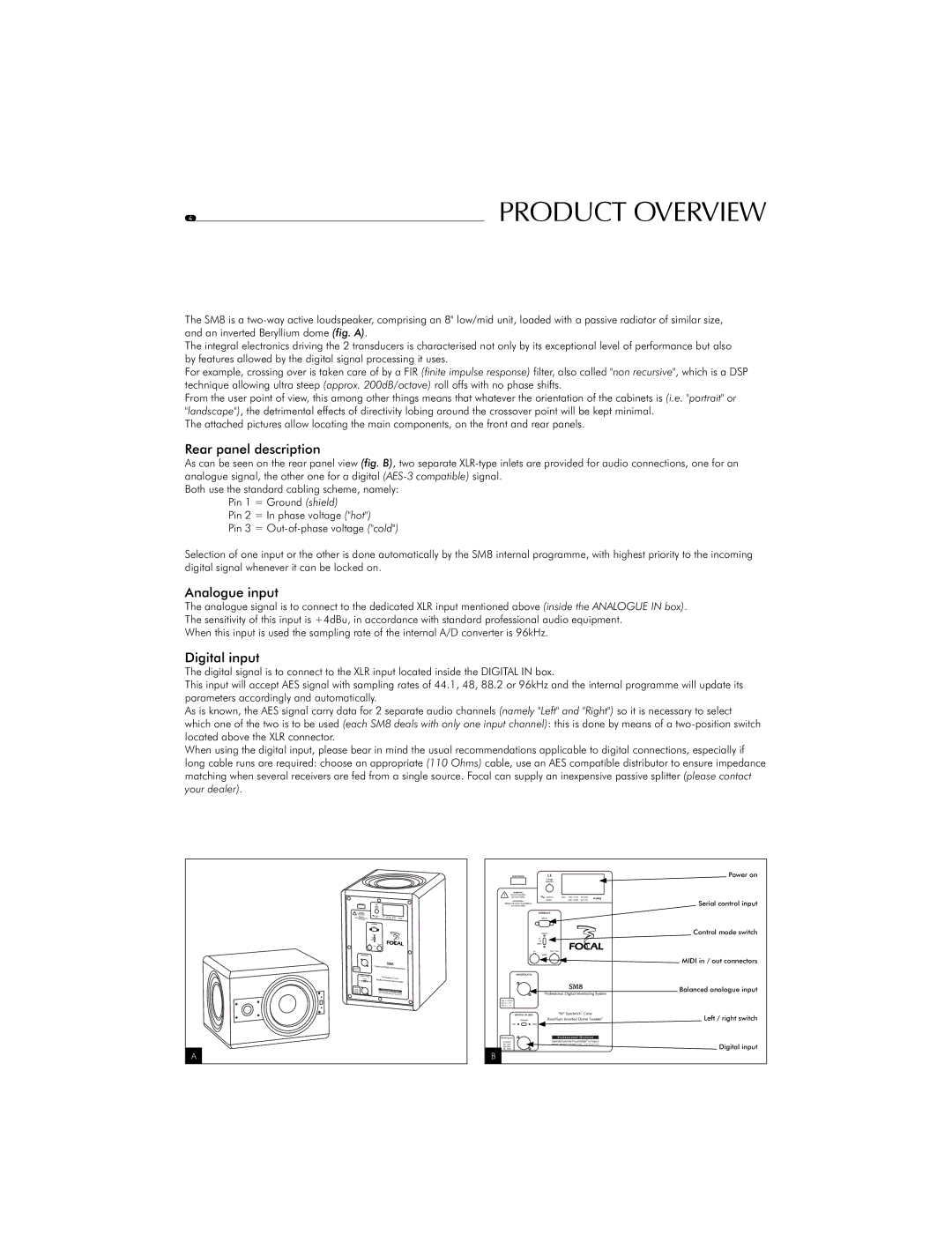
4 |
| PRODUCT OVERVIEW |
The SM8 is a
The integral electronics driving the 2 transducers is characterised not only by its exceptional level of performance but also by features allowed by the digital signal processing it uses.
For example, crossing over is taken care of by a FIR (finite impulse response) filter, also called "non recursive", which is a DSP technique allowing ultra steep (approx. 200dB/octave) roll offs with no phase shifts.
From the user point of view, this among other things means that whatever the orientation of the cabinets is (i.e. "portrait" or "landscape"), the detrimental effects of directivity lobing around the crossover point will be kept minimal.
The attached pictures allow locating the main components, on the front and rear panels.
Rear panel description
As can be seen on the rear panel view (fig. B), two separate
Both use the standard cabling scheme, namely: Pin 1 = Ground (shield)
Pin 2 = In phase voltage ("hot")
Pin 3 =
Selection of one input or the other is done automatically by the SM8 internal programme, with highest priority to the incoming digital signal whenever it can be locked on.
Analogue input
The analogue signal is to connect to the dedicated XLR input mentioned above (inside the ANALOGUE IN box). The sensitivity of this input is +4dBu, in accordance with standard professional audio equipment.
When this input is used the sampling rate of the internal A/D converter is 96kHz.
Digital input
The digital signal is to connect to the XLR input located inside the DIGITAL IN box.
This input will accept AES signal with sampling rates of 44.1, 48, 88.2 or 96kHz and the internal programme will update its parameters accordingly and automatically.
As is known, the AES signal carry data for 2 separate audio channels (namely "Left" and "Right") so it is necessary to select which one of the two is to be used (each SM8 deals with only one input channel): this is done by means of a
When using the digital input, please bear in mind the usual recommendations applicable to digital connections, especially if long cable runs are required: choose an appropriate (110 Ohms) cable, use an AES compatible distributor to ensure impedance matching when several receivers are fed from a single source. Focal can supply an inexpensive passive splitter (please contact your dealer).
A |
Power on |
Serial control input |
Control mode switch |
MIDI in / out connectors |
Balanced analogue input |
Left / right switch |
Digital input |
B |
